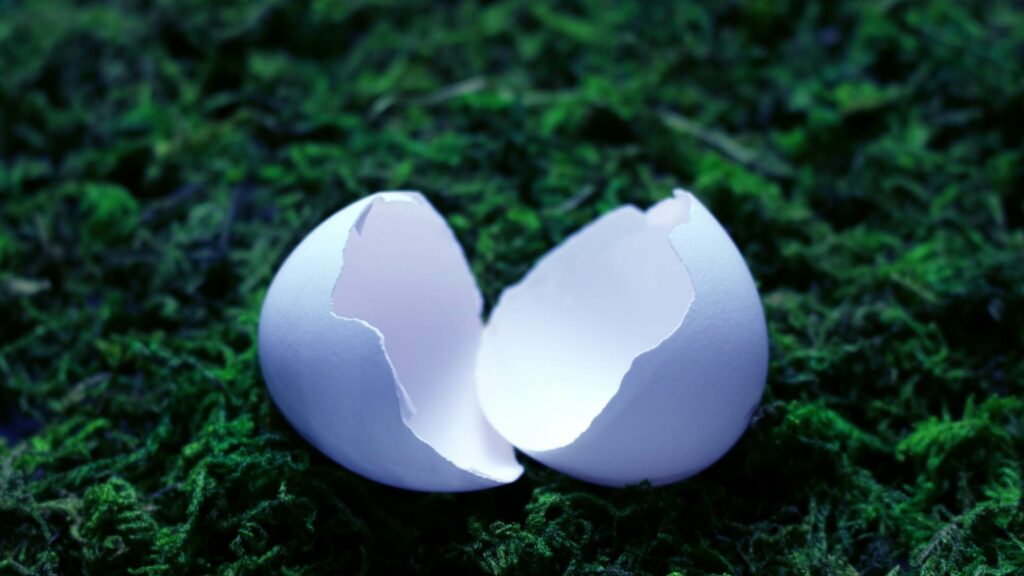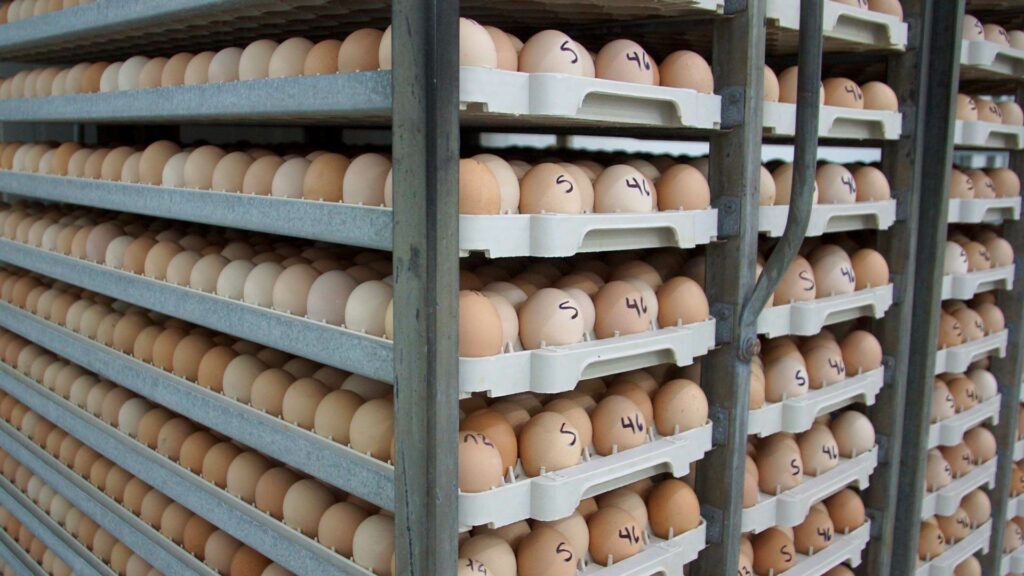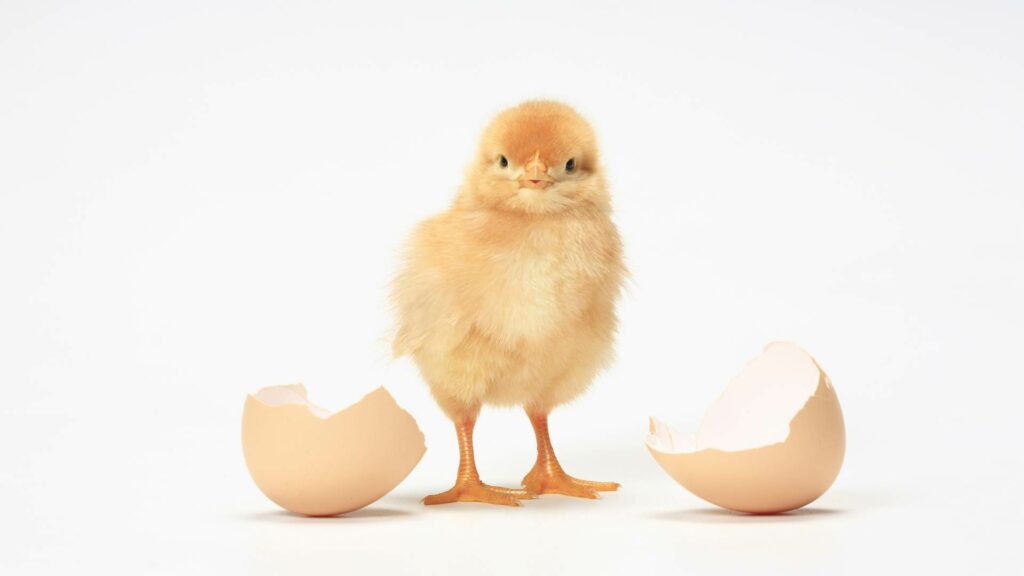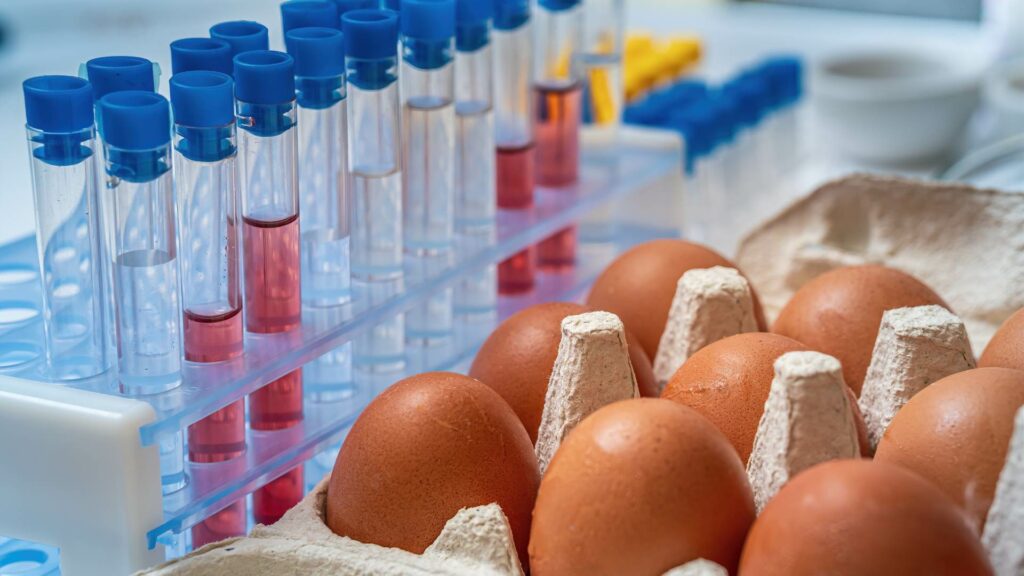Egg hatching is a process that starts as soon as the eggs are laid and the hen begins to brood them. The act of brooding is a natural and essential process for the eggs to develop properly.
In this article we will look at the reasons why eggs cannot hatch despite the brooding period and what can be done to avoid this situation when laying.
They don’t hatch because the eggs are infertile
What is an infertile egg?
Quite simply, an infertile egg is an egg that has not been fertilised by a male sperm. In other words, the embryo that develops from the egg will not be viable and will not give rise to a chick after hatching.
In domestic egg production, infertile eggs are common because the hens will regularly lay eggs, but they need a rooster to fertilise them and produce viable chicks.
Factors that cause egg infertility
Several factors can contribute to egg infertility. Here are some of the most common ones:
- Lack of a male: Eggs laid by a chicken farmer who does not have a cock will be infertile.
- Poor sperm quality: Factors such as the age of the rooster, his health and his diet can influence the quality of his sperm and therefore his ability to fertilise eggs.
- Condition of the eggs: Eggs stored in extreme temperatures or that have been damaged during collection can become infertile.
- Diseases: Viral or bacterial infections can affect the fertility of roosters and hens. Sexually transmitted diseases can also be transmitted to eggs, making them infertile.
- Other factors are stress and genetics.
Identifying infertile eggs: we explain
Identifying fertile eggs can be important for chicken farmers who want to raise chicks. Here are some steps to identify fertile eggs:
- Storing the eggs: Eggs should be stored horizontally in a clean, cool place so that the yolk remains centred and the embryo does not stick to the shell.
- Observation of the shell: Fertile eggs may show marks or spots of a slightly different colour than unfertilised eggs.
- Using light: By using a bright light to illuminate the eggs in a dark room, breeders can see a network of blood vessels inside the egg, indicating that it is fertile.
- Incubation: After a few days of incubation, fertile eggs start to show signs of development, such as the formation of an embryo and blood veins.
They don’t hatch because of poor incubation conditions
Why are proper incubation conditions important?
In addition to knowing the different conditions of artificial incubation, poultry farmers need to be able to adapt them accordingly to ensure that as many eggs as possible can hatch.
For example, poor incubation conditions can result in delayed or arrested embryonic development. Delayed hatching or eggs that fail to hatch can affect the quality of chicks that do hatch. More worryingly, poor incubation conditions can increase the mortality rate of chicks, both before and after hatching.
ECAT-iD supports farmers in the incubation of their eggs, thanks to their Ovosense machine which is able to detect badly positioned and upside-down eggs. Indeed, an upside-down egg will prevent the chick from breathing and it is essential to put it in a good position so that it can hatch in optimal incubation conditions.
Negative factors that influence these conditions
Negative factors that can influence egg incubation conditions are temperature, humidity, ventilation, nutrition and disease. These factors can affect the development and hatching of the eggs and the health of the chicks.
Inappropriate temperatures can cause birth defects in chicks, while incorrect humidity levels can affect the development of their lungs.
Our tips for maintaining optimal incubation conditions
Logically, in order to maintain optimal incubation conditions, the breeder must control the various negative factors mentioned above. Thus, to ensure normal growth, he must
- Maintain the incubator temperature at an appropriate level, usually between 37.5°C and 38.5°C.
- Maintain humidity at an optimal level, usually between 50% and 55%.
- Maintain a constant supply of fresh air through good ventilation to avoid the build-up of carbon dioxide and moisture.
They don’t hatch because of genetic abnormalities
Common genetic abnormalities in chicks
Genetic abnormalities can be a common cause of non-hatching of eggs in chicks. These abnormalities can affect the health and survival of chicks, as well as their subsequent growth and development.
Genetic defects can affect different parts of the chick’s body, including the legs, wings, eyes and central nervous system. Among the most common genetic defects in chicks are limb and feather deformities, blindness, deafness and neurological disorders.
Ways to identify these genetic defects
It is important to identify these genetic abnormalities as early as possible so that early action can be taken to improve the health and survival of chicks. Regular observation of chicks from the time they hatch is therefore essential to detect genetic abnormalities early and take the necessary measures.
How can these abnormalities be prevented?
To avoid these genetic abnormalities, it is important to select healthy and vigorous breeders. Hens and roosters should be selected on the basis of their health, disease resistance and breeding history. Good nutrition and health care are also important to prevent genetic defects.
They do not hatch because of disease or infection
Types of diseases and infections that can affect chicks
Various diseases and infections can affect the hatching of eggs and the health of chicks. These include salmonellosis, Newcastle disease, coccidiosis and avian flu amongst others.
To avoid the spread of these diseases and infections, it is important to put in place appropriate preventive measures, such as regular cleaning of incubators and brooders, control of disease vectors such as insects and rodents, and vaccination of hens and chicks against the most common diseases.
By ensuring that incubation conditions in brooders and incubators are optimal, farmers can help reduce the risk of disease and improve the hatching rate of fertilised eggs.
Treatments and prevention for these diseases
To prevent disease in hens and chicks in artificial incubation, it is important to
- Follow proper cleaning and disinfection protocols for the incubator and brooder.
- Ensure that eggs are free of cracks and contamination before placing them in the incubator or brooder.
- Vaccinate breeders against common diseases to reduce the risk of transmission to eggs and chicks.
- Control disease vectors such as insects and rodents in the environment.
- Regularly monitor the health of their hens and chicks to detect signs of disease as early as possible
- Improve the resistance of breeders by ensuring a balanced diet and sufficient clean, fresh water.
In case of poultry diseases, it is important to isolate sick birds and treat them quickly with appropriate medication to prevent the spread of the disease.
The importance of biosecurity measures
Biosecurity measures are essential to protect the hen, the brood egg and the artificially hatched chicks from disease and infection. A hen kept in a clean and healthy environment is less likely to contract diseases and is therefore more likely to produce healthy eggs.
Limiting the exposure of hens to disease vectors such as insects, rodents and wild birds greatly reduces the risk of spreading disease. Strict biosecurity practices can also prevent the spread of disease from one farm to another.
There are many reasons why eggs may not hatch, but prevention of these problems begins at the time of laying. Even before the hens start laying, it is therefore important to maintain optimal conditions.




